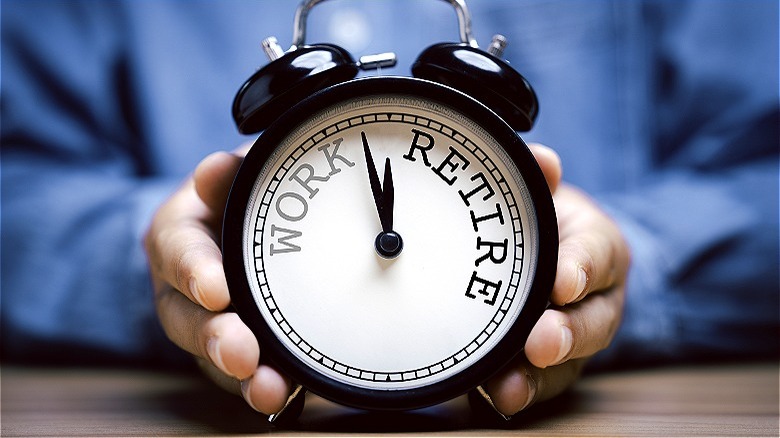5 Things You Need To Secure Before Investing (And How To Start Investing When You're Ready)
Successful investing is built on solid strategy, as well as a confidence that other pieces of the financial puzzle are already set in place. When planning for routine investing or retirement saving, it's essential to have the knowledge that these funds won't be cut into for emergencies, monthly budgetary needs, and other financial circumstances — unless extreme conditions come into the picture.
Setting the table for success means securing a number of core competencies and action items. In speaking with Jason Tartick, bestselling author, finance expert, and podcast host, we discussed five of the most important steps that investors need to take in going from novice to fully confident saver. Tartick's latest book focuses specifically on personal finances, saving, and investing as a couple, and many of the lessons he offers are grounded in the background financial competencies that individuals bring into their relationships rather than a change that takes place after the fact. Tartick offers his expert take on the focal points that investors must nail down as they prepare to enter the market.
1. Build an emergency fund and nail down incentives
For Jason Tartick, the first port of call must always be the emergency fund. Creating an emergency fund that can see you through any spending hiccup is an essential task that far too many people fail to fully comprehend. The difference between fielding an emergency situation with cash set aside versus leaning on a credit card can be massive. Tartick notes that the first of "the five things you must do before investing is you have to have your 'oh crap money.' Your emergency fund."
Everyone's emergency savings will look a little different, but the fundamentals remain the same, regardless of your unique financial picture. You'll ultimately want to set aside enough to cover the expenses of three to six months. This might mean a few thousand dollars, or it may be far greater. Other financial experts like Dave Ramsey suggest starting small with an emergency fund: A goal of $1,000, for example, can act as a manageable road marker on the way to a fully established fund.
Tartick also focuses on the incentive plans investors can take advantage of. In addition to covering your back in the event of a sudden setback, you'll want to flesh out all the free incentive programs you can loop into your investment portfolio. "You have to take advantage of all the free money. The matches, the discounted stock options, the HSA matches, etc.," he said. Many employers offer a range of great benefits like IRA contribution matches. You simply can't afford to leave this free money on the table.
2. Eliminate bad debt
After you've established a backstop to protect you and your loved ones in the event of an emergency, the next action item that must be secured is one that's universally reviled: "You then have to take care of all that bad debt," Jason Tartick said. Lending products like mortgages and car loans can't typically be eliminated rapidly, but these aren't the culprits Tartick is talking about. Credit card debt is the most prominent among those earmarked as "bad." The issue — for most — isn't the fact you owe a lender, but rather the interest rate attached to the funds borrowed. Credit card spending is rampant in the United States, to the tune of over $1.1 trillion, collectively.
High-interest loans and credit lines eat away at financial viability over the long term. Not only will you spend exponentially more on the things you buy with these lending products, but the monthly payment you make takes away from investment potential and other spending needs that factor into your daily lifestyle. Paying for something you bought last week — or last year — can dramatically damage your fiscal mobility today and long into the future. Tartick suggests getting serious about eliminating bad debts ahead of intense focus on investments.
3. Increasingly prioritize retirement savings
As you age, you'll continually march closer toward retirement. This is the natural progression for us all, and it goes hand in hand with a slowly building focus on what that retirement might look like. Jason Tartick suggests that investors should increasingly focus on retirement strategies as they age. After you've solidified your emergency fund and addressed any bad debts that may weigh down your financial mobility, Tartick says "you then want to increase any availability you have to put more into your retirement savings and then you want to make sure you have a good handle on your good debt."
Of course, the earlier you start saving for retirement, the more strength your portfolio will exhibit. For any investment asset, compounding interest plays a primary role in its growth. Therefore, when it comes to saving money for your golden years, starting when you first enter the workforce delivers the maximum timeline for appreciation. Yet putting all your eggs in the retirement basket can leave you vulnerable to other short-term factors.
For instance, a young person looking to buy their first home can't expect to lean on retirement savings to fund the down payment. Separating medium-term and retirement-length savings buckets is crucial to financial success at every life stage. Yet, as you continue to pass through each new phase, you'll want to shift focus to place an incrementally bigger focus on your retirement.
4. Match risk profiles with your needs
Risk tolerance is a somewhat bizarre quirk of the market. Every investor will have to come face to face with their own tolerance for losing money, perhaps even walking away broke. Young investors are naturally more risk-tolerant than older savers, who will be looking to defend the nest egg they've established. "Based on risk tolerance in your age, you will have a different allocation mix of what your investment portfolio will look like. Typically, it will be domestic equities, international equities, bonds, and short-term," said Jason Tartick.
"Then, what you have to do, is you have to understand what percentage of those you are going to have. Also, short-term is going to be cash, treasury bills, money markets, etc. So, you will have to understand the percentage of what your portfolio will be made up of based on where you're at," he added. Some financial advisers suggest shifting to a 60-40 split (stocks to bonds) after you turn 50, while stock holdings make up the vast majority of investment assets until this decade transition.
Ultimately, it's up to you to decide on the best path forward, though. "... Your allocation mix is all going to be based on what your risk tolerance is and what your age is. You have to understand your risk tolerance. It's like going into a casino. You have one person who is ready to put all of their money into red and one person who just wants the free drinks. Those are different risk tolerances," Tartick said.
5. Infuse structure with index funds
Finally, Jason Tartick hails the use of index funds. "I will say index funds that I love with low fees that track U.S. markets would be Vanguard's Index Fund that mirrors the S&P 500 ... [and] VTWO that mirrors the Russell 2000 Index, a group of the 2,000 smallest publicly traded companies in the United States." He also suggests VTI, another Vanguard offering. Said Tartick, "If you want a larger net of companies to cover, this Vanguard index will actually cover almost every single publicly traded stock in the U.S., including small, medium and large companies at all sectors."
Index funds are the backbone of many successful investment portfolios. They blend a wealth of company stock positions together to level out risk to a bare minimum while offering great growth potential over the long term. Unlike individual stock picking, there's little possibility to bottle lightning and see tremendous growth over a period of days, weeks, or months.
However, index funds bring a secret weapon into the everyday trader's stock portfolio. With the weight of the stock market itself on your side — a vessel that has continually seen long-term growth with only intermittent market pullbacks in the grand scheme of things — you'll enjoy a greater ability to select riskier positions to augment the strong footing created to chase increased profits.





